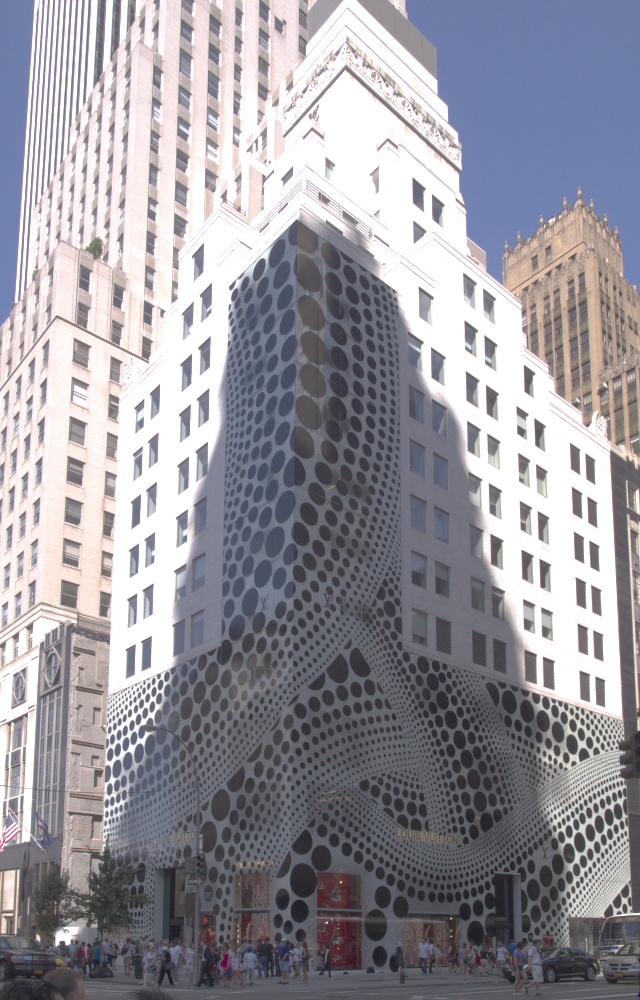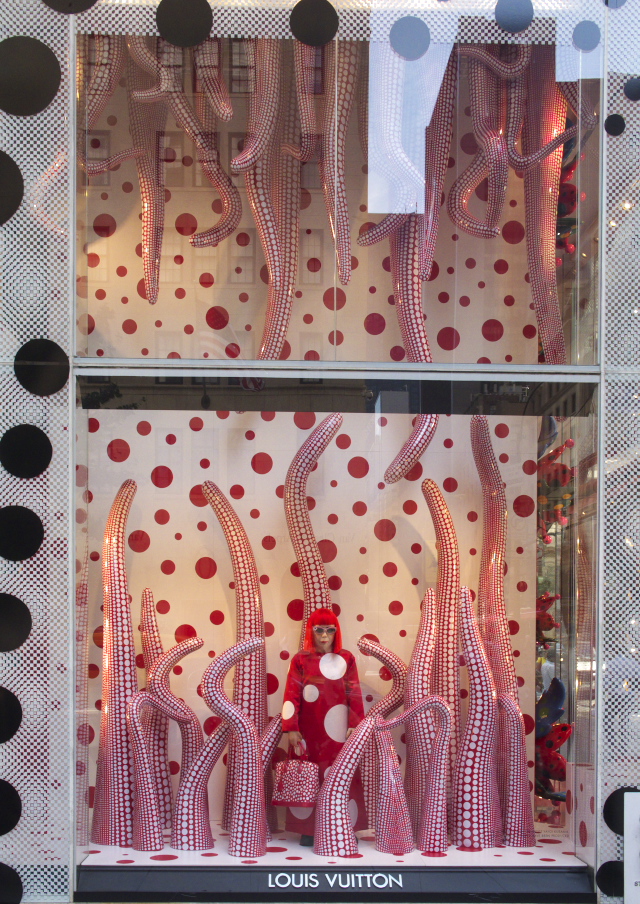
Located adjacent to
Cairnwood is the
Bryn Athyn Cathedral; Literally next door or if you want to be technical, in the side yard of the house.

The Cathedral is the seat of the "New Church" and was donated by John Pitcairn and was mainly designed by his son Raymond Pitcairn.

Of course the benefit to this location is that each room of the house (Cairnwood) is afforded picturesque views of a gorgeous cathedral. Plus the commute to chapel for the religious Pitcairn family was definitely convienent!

The main bulk of the structure was started in 1913 and finished in 1919. Designed in an early Gothic style, later smaller additions (designed by Raymond) are in Norman Romanesque.

Strangely enough, this style is historically earlier creating the impression that the larger main tower was built later.

The design was based on Gloucestor Cathedral in England and is immense (the main tower rises 150 ft!), only plunked down in rural Pennsylvania.

Beside the tower is a leg of a cloister which was designed to be fully enclosed (creating a square courtyard) but was never completed.

Here you can see the beautiful detail to the stonework.

The church sees a lot of active use as you can see by the furnishings and immaculate cleanliness.

Stone as far as the eye can see.

The superb craftsmanship of everything makes this building so special, just look at these door handles.

Everything is as special as a Cathedral should be.

I loved this little private side door off an intimate garden.

No detail was overlooked.

The details of this side exterior stair were really incredible.

Ezekials Tower, seen here, was completed in 1926 and lies off to the side of the main structure.

Again, I just couldn't get over the amount of detail.

Even each little basement window grate was different and a work of art.

Before going inside, lets take a look at the floorplan.

If you look closely, you can see that nothing was built straight. This was purposeful and not a result of being done mainly without drawings (in the 20th century no less!). This mimic'd ancient cathedrals of Europe where it was also done intentionally.

To the North of the church lies Michael's Tower (the main entrance) and the choir hall (seen above).

I thought this was a shame as the main entrance to the chapel is this gorgeous metal door, facing a spectacular view.

Can you believe this cathedral is in rural Pennsylvania?!

All of the wood seen here is teak and the Pitcairn's bought an entire boatload of the wood which had been an order left by someone else (who doesn't love a deal). Teak is used for ceilings and doors here at the Cathedral as well as in Raymond's own amazing house which I will show you next week. The guide I spoke too said the family still has a barn full of the unused teak!

Fittingly enough Raymond developed the techniques used in creating all of the stained glass on the grounds of Cairnwood. I say fitting as part of the families' fortune, if you will remember, came from the forming of PPG (Pittsburgh Plate Glass).

Raymond collected and studied medieval stained glass to replicate the lost techniques used.

The details on these windows are incredible and you would never guess many were created as late as the 1960s.

Again, I urge you all to visit and support both
Cairnwood and
Bryn Athyn Cathedral!

















 Located adjacent to
Located adjacent to  The Cathedral is the seat of the "New Church" and was donated by John Pitcairn and was mainly designed by his son Raymond Pitcairn.
The Cathedral is the seat of the "New Church" and was donated by John Pitcairn and was mainly designed by his son Raymond Pitcairn.  Of course the benefit to this location is that each room of the house (Cairnwood) is afforded picturesque views of a gorgeous cathedral. Plus the commute to chapel for the religious Pitcairn family was definitely convienent!
Of course the benefit to this location is that each room of the house (Cairnwood) is afforded picturesque views of a gorgeous cathedral. Plus the commute to chapel for the religious Pitcairn family was definitely convienent! The main bulk of the structure was started in 1913 and finished in 1919. Designed in an early Gothic style, later smaller additions (designed by Raymond) are in Norman Romanesque.
The main bulk of the structure was started in 1913 and finished in 1919. Designed in an early Gothic style, later smaller additions (designed by Raymond) are in Norman Romanesque.  Strangely enough, this style is historically earlier creating the impression that the larger main tower was built later.
Strangely enough, this style is historically earlier creating the impression that the larger main tower was built later.
 Beside the tower is a leg of a cloister which was designed to be fully enclosed (creating a square courtyard) but was never completed.
Beside the tower is a leg of a cloister which was designed to be fully enclosed (creating a square courtyard) but was never completed.  Here you can see the beautiful detail to the stonework.
Here you can see the beautiful detail to the stonework. The church sees a lot of active use as you can see by the furnishings and immaculate cleanliness.
The church sees a lot of active use as you can see by the furnishings and immaculate cleanliness. Stone as far as the eye can see.
Stone as far as the eye can see. The superb craftsmanship of everything makes this building so special, just look at these door handles.
The superb craftsmanship of everything makes this building so special, just look at these door handles. Everything is as special as a Cathedral should be.
Everything is as special as a Cathedral should be. I loved this little private side door off an intimate garden.
I loved this little private side door off an intimate garden. No detail was overlooked.
No detail was overlooked. The details of this side exterior stair were really incredible.
The details of this side exterior stair were really incredible. Ezekials Tower, seen here, was completed in 1926 and lies off to the side of the main structure.
Ezekials Tower, seen here, was completed in 1926 and lies off to the side of the main structure. Again, I just couldn't get over the amount of detail.
Again, I just couldn't get over the amount of detail. Even each little basement window grate was different and a work of art.
Even each little basement window grate was different and a work of art. Before going inside, lets take a look at the floorplan.
Before going inside, lets take a look at the floorplan.  If you look closely, you can see that nothing was built straight. This was purposeful and not a result of being done mainly without drawings (in the 20th century no less!). This mimic'd ancient cathedrals of Europe where it was also done intentionally.
If you look closely, you can see that nothing was built straight. This was purposeful and not a result of being done mainly without drawings (in the 20th century no less!). This mimic'd ancient cathedrals of Europe where it was also done intentionally.  To the North of the church lies Michael's Tower (the main entrance) and the choir hall (seen above).
To the North of the church lies Michael's Tower (the main entrance) and the choir hall (seen above).
 Can you believe this cathedral is in rural Pennsylvania?!
Can you believe this cathedral is in rural Pennsylvania?! All of the wood seen here is teak and the Pitcairn's bought an entire boatload of the wood which had been an order left by someone else (who doesn't love a deal). Teak is used for ceilings and doors here at the Cathedral as well as in Raymond's own amazing house which I will show you next week. The guide I spoke too said the family still has a barn full of the unused teak!
All of the wood seen here is teak and the Pitcairn's bought an entire boatload of the wood which had been an order left by someone else (who doesn't love a deal). Teak is used for ceilings and doors here at the Cathedral as well as in Raymond's own amazing house which I will show you next week. The guide I spoke too said the family still has a barn full of the unused teak! Fittingly enough Raymond developed the techniques used in creating all of the stained glass on the grounds of Cairnwood. I say fitting as part of the families' fortune, if you will remember, came from the forming of PPG (Pittsburgh Plate Glass).
Fittingly enough Raymond developed the techniques used in creating all of the stained glass on the grounds of Cairnwood. I say fitting as part of the families' fortune, if you will remember, came from the forming of PPG (Pittsburgh Plate Glass). Raymond collected and studied medieval stained glass to replicate the lost techniques used.
Raymond collected and studied medieval stained glass to replicate the lost techniques used.  The details on these windows are incredible and you would never guess many were created as late as the 1960s.
The details on these windows are incredible and you would never guess many were created as late as the 1960s.




